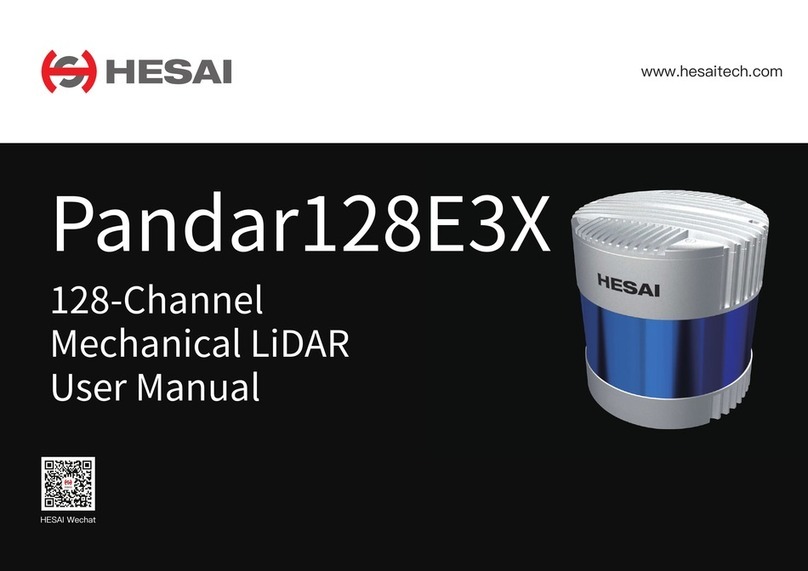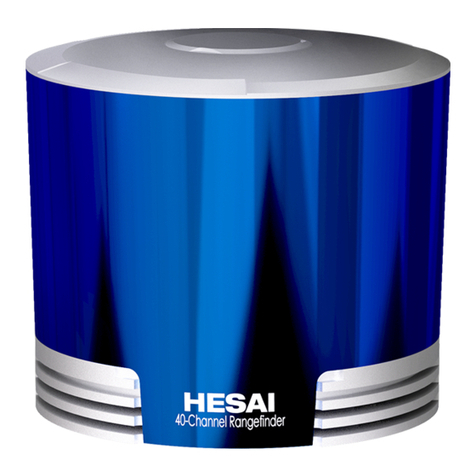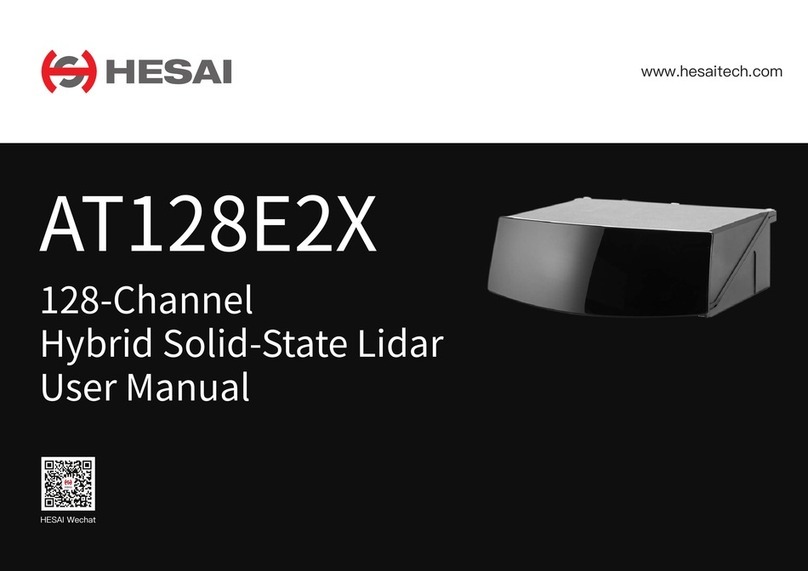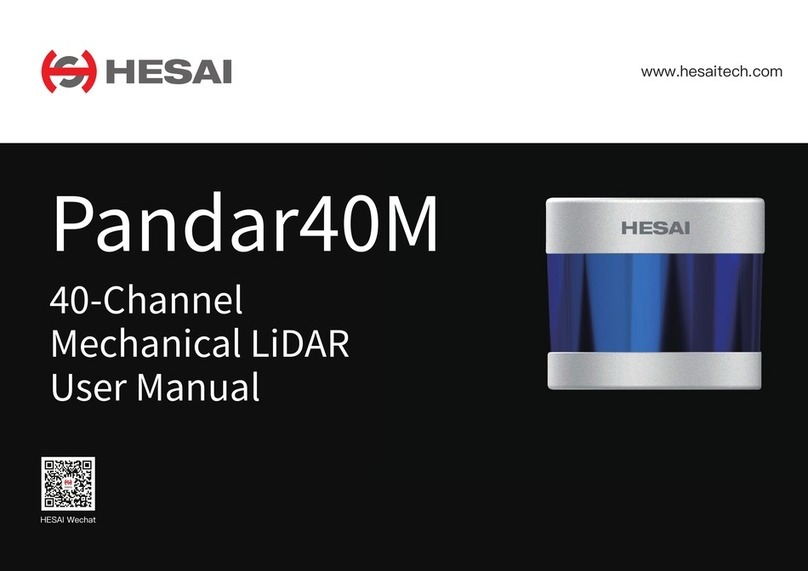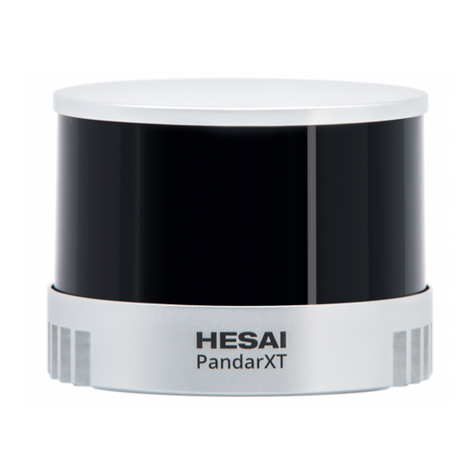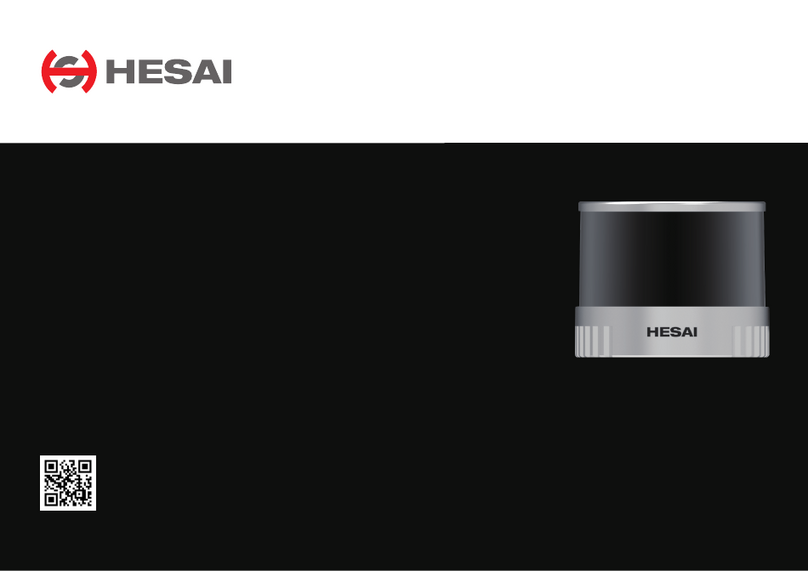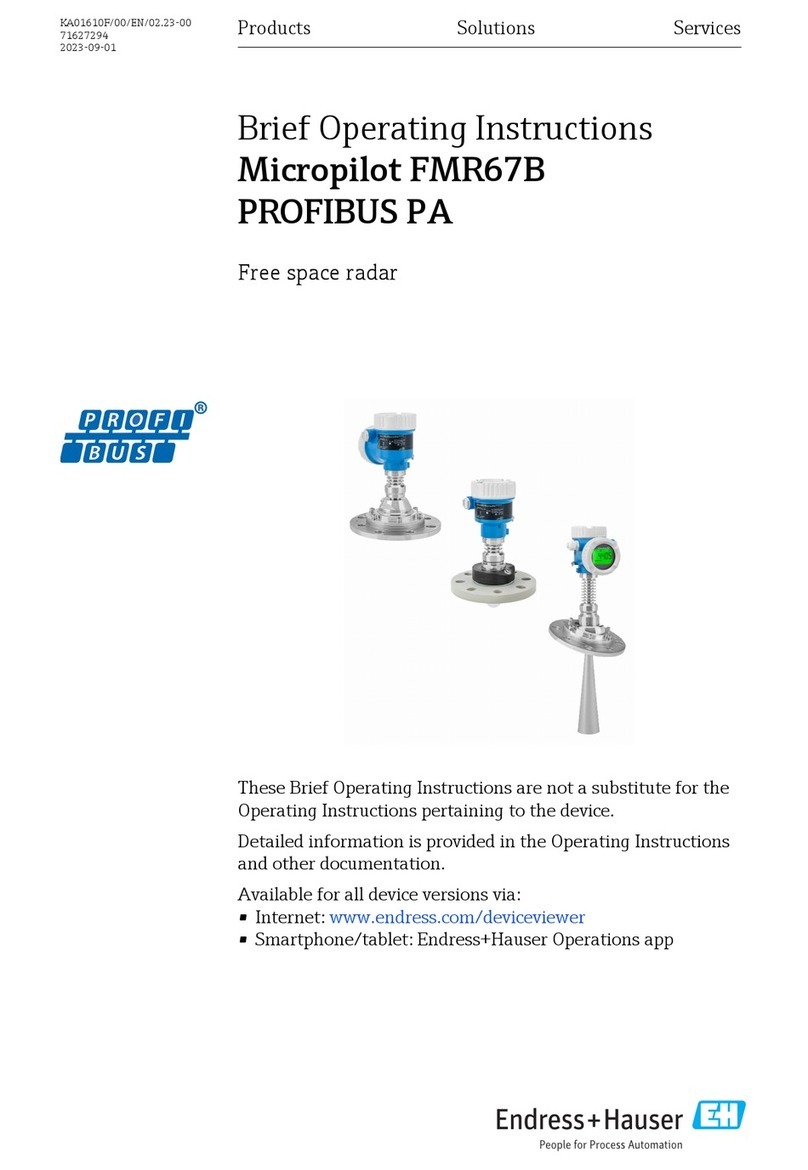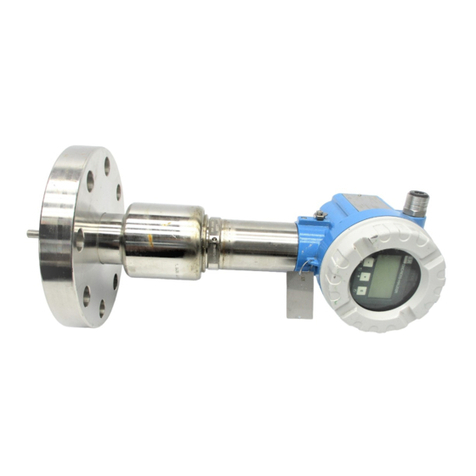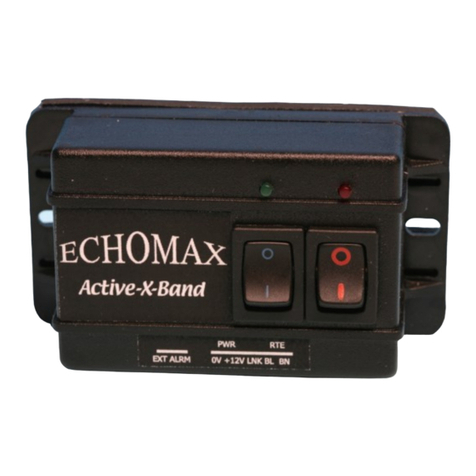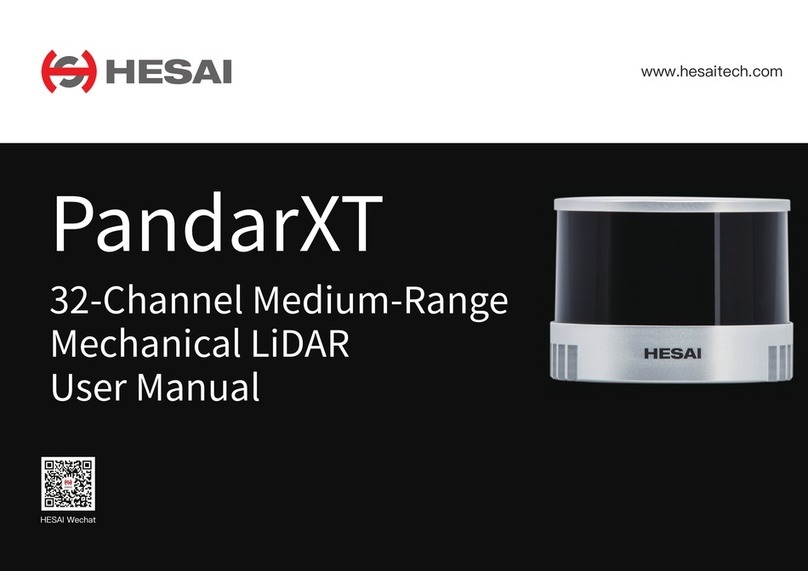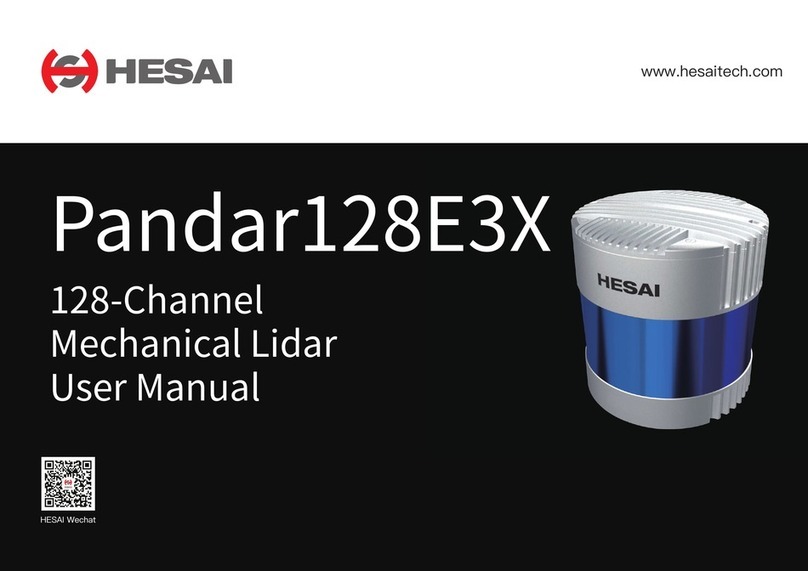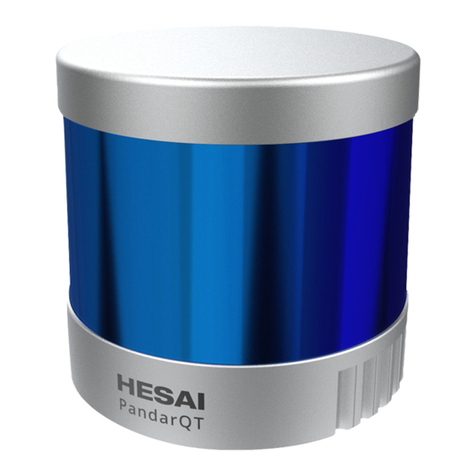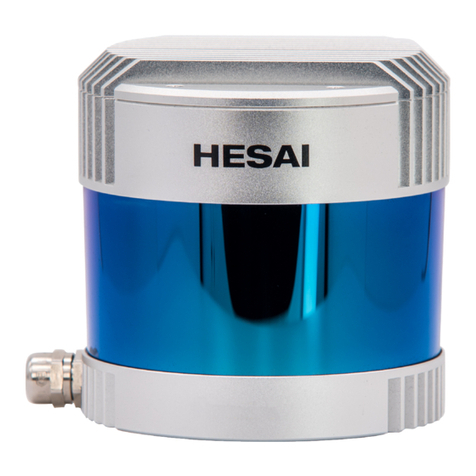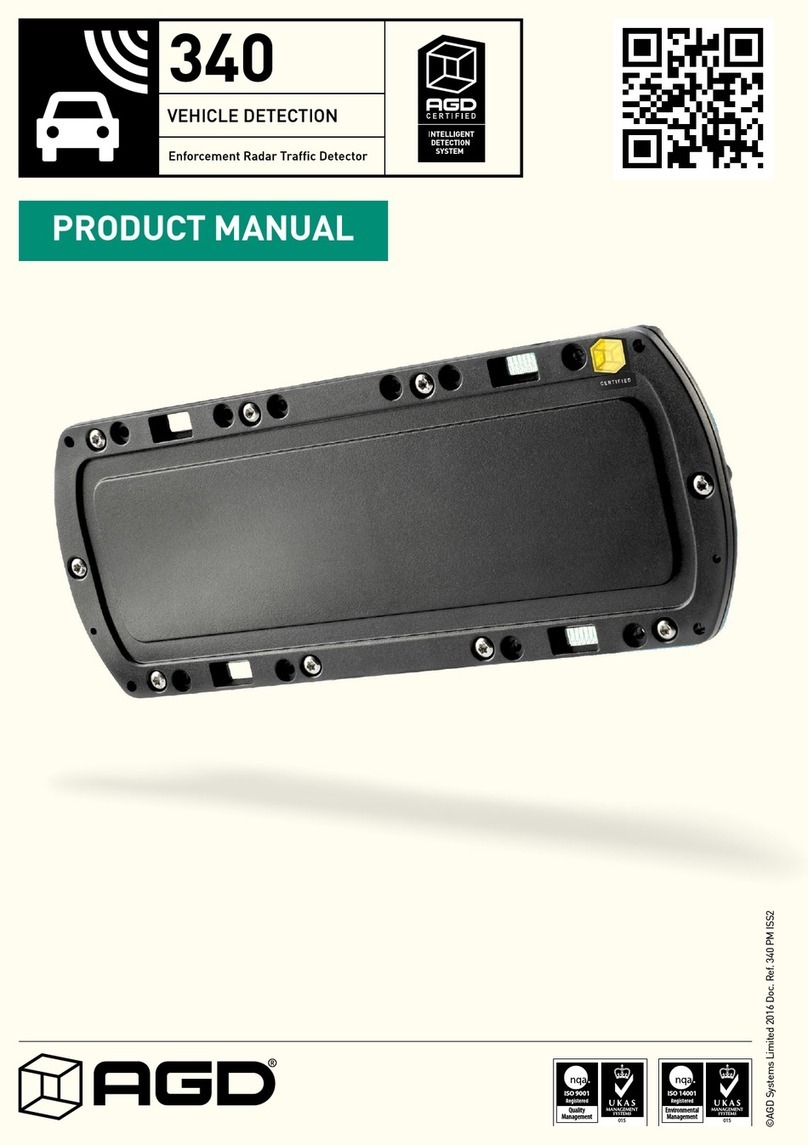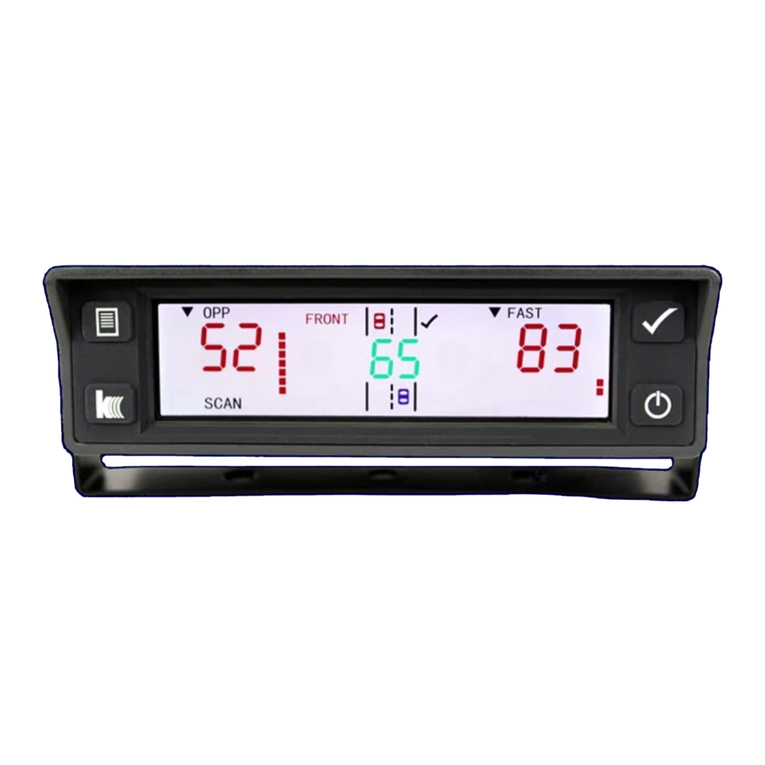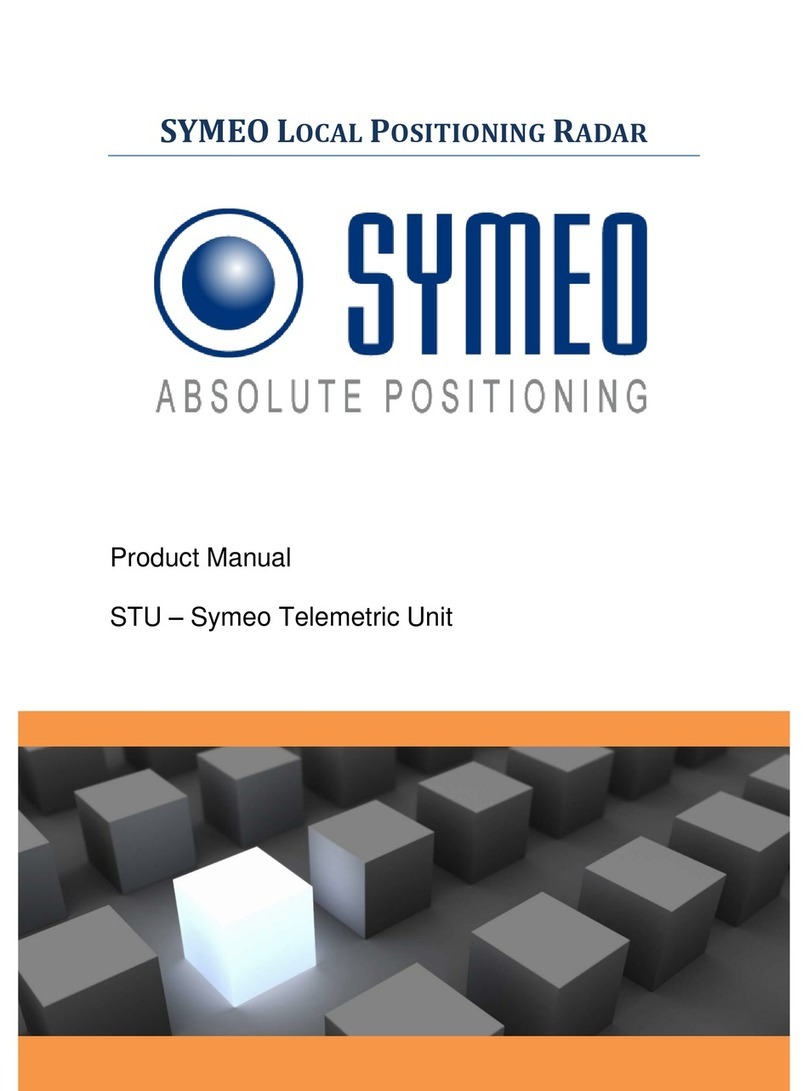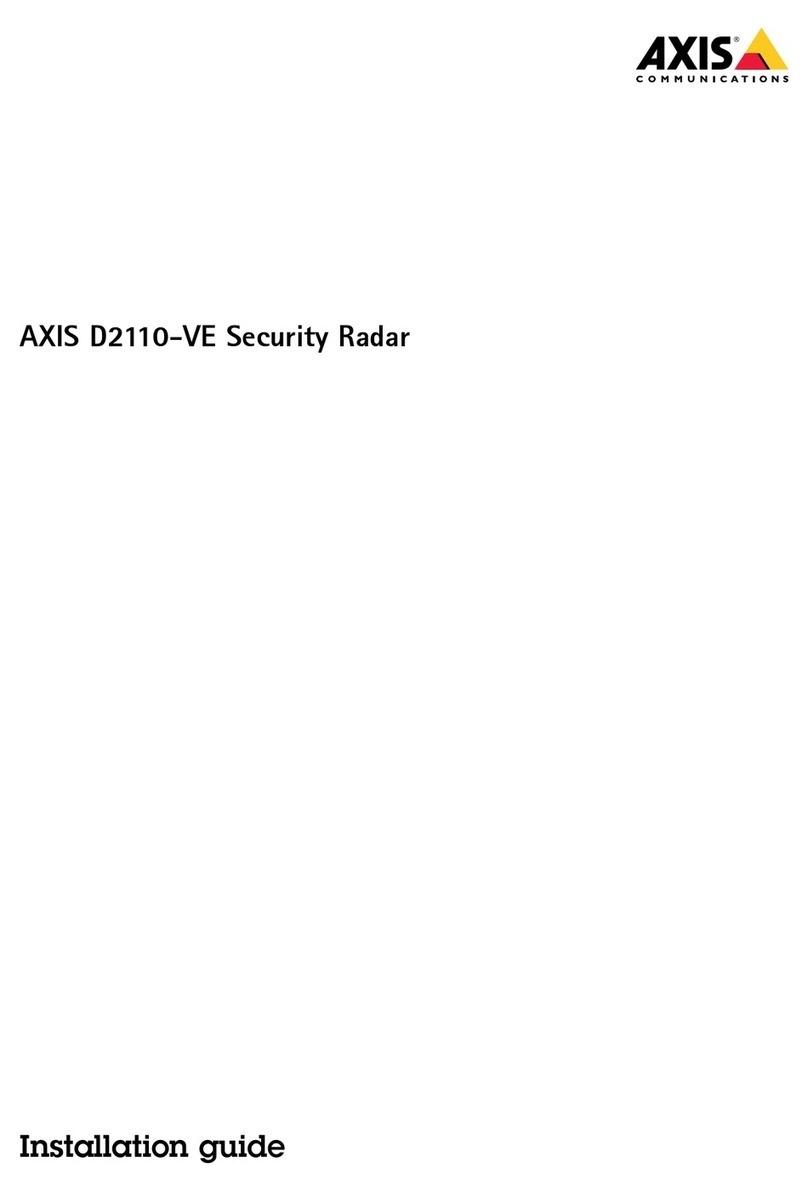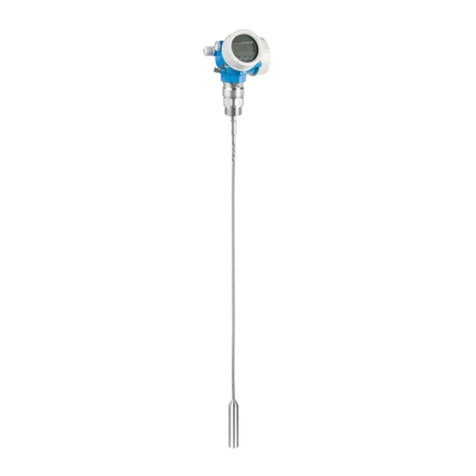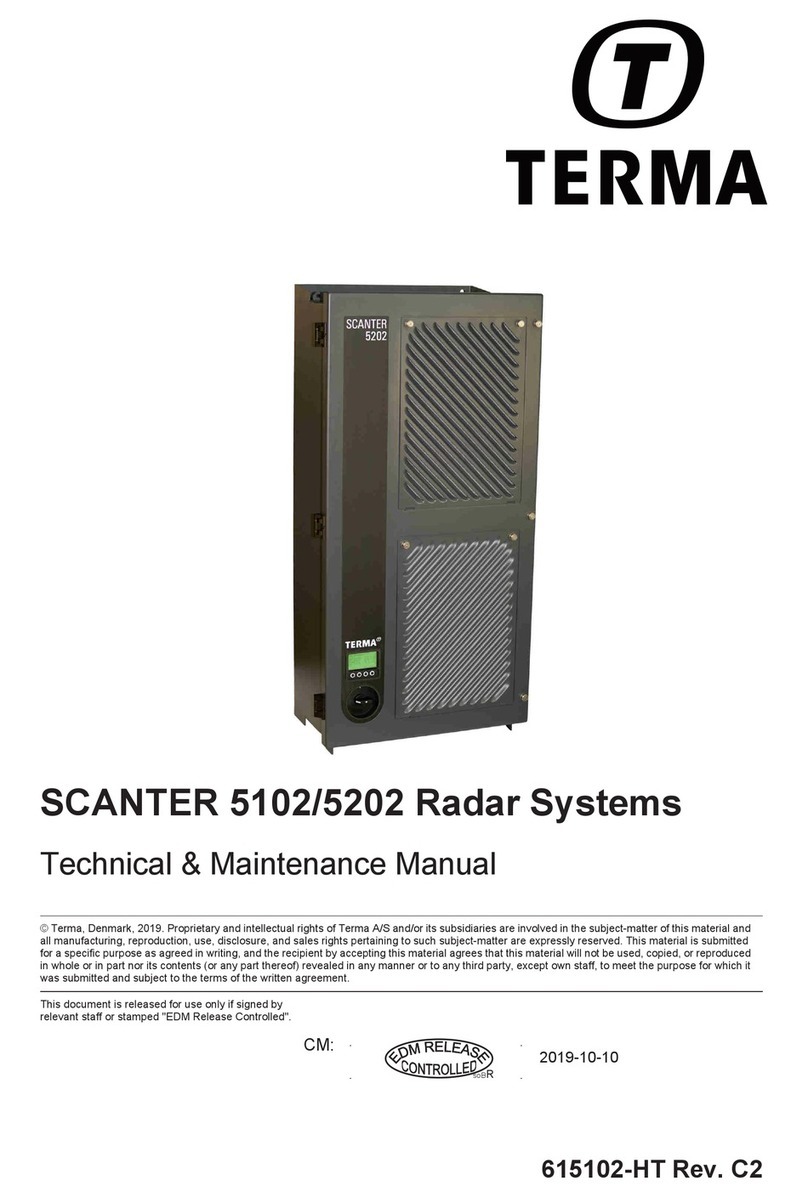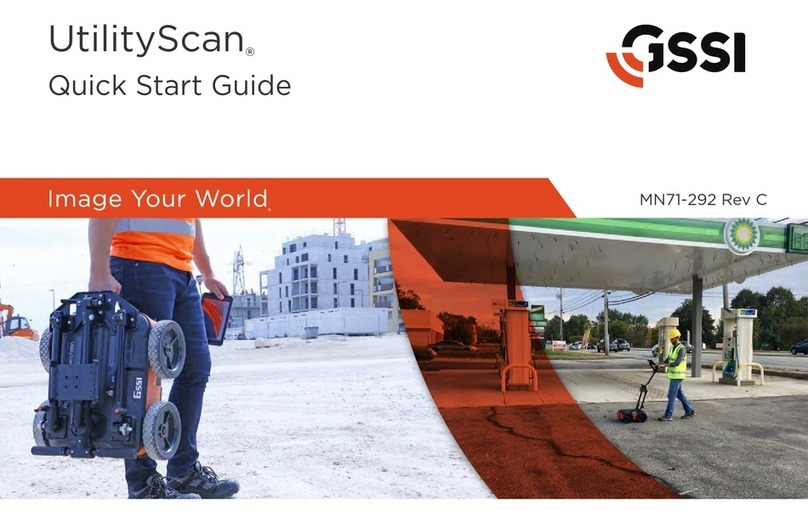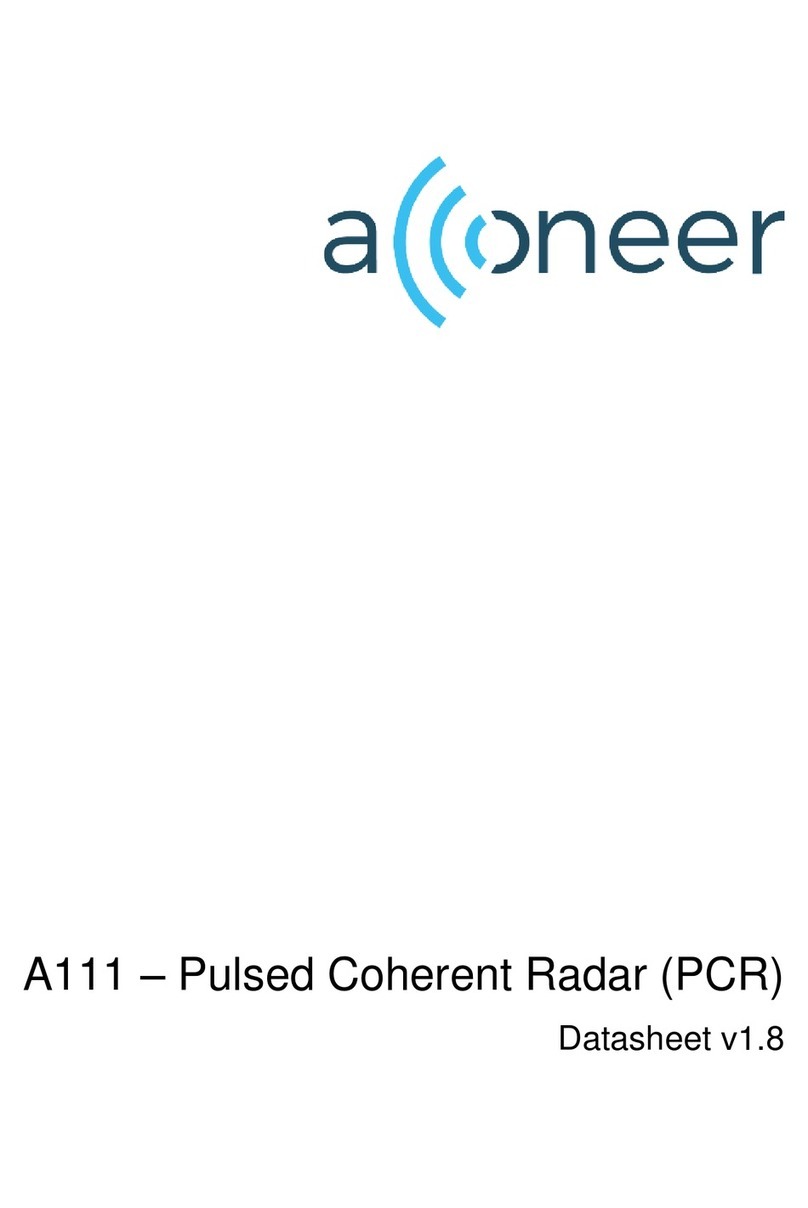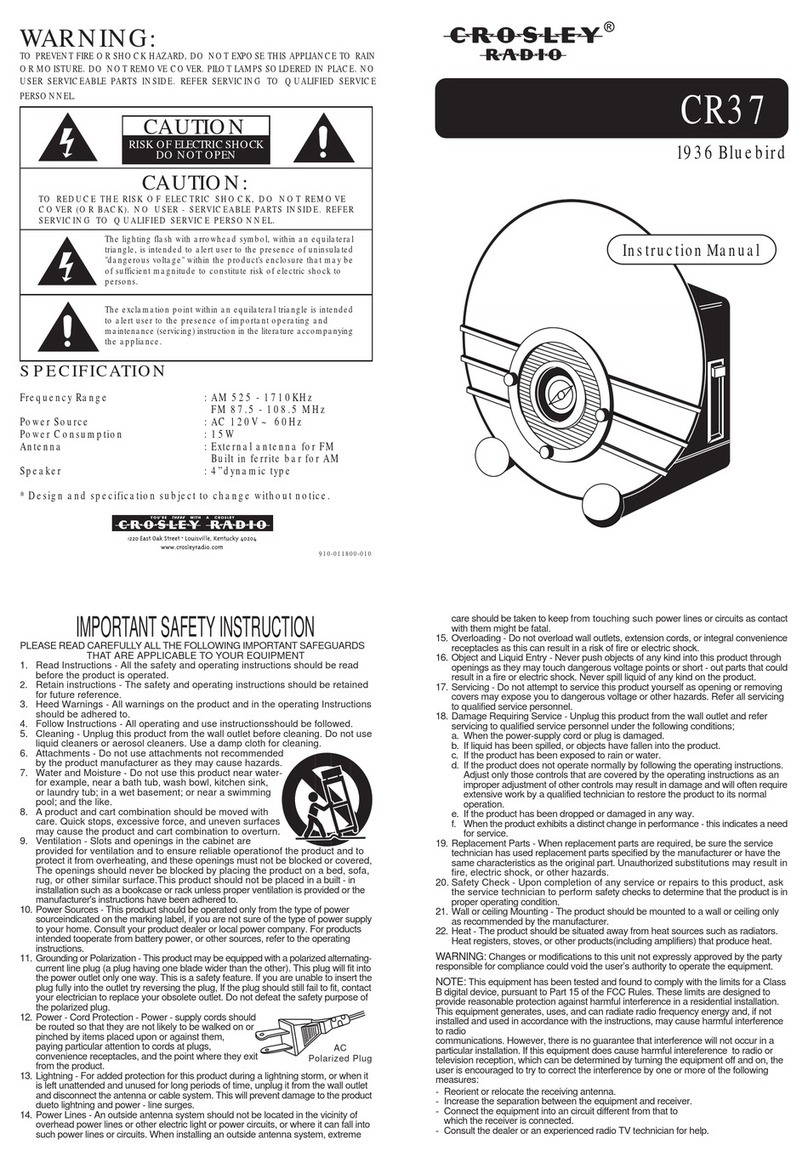Doc Version: Q03-en-220810
Contents
About This Manual..................................................................................... 1
Safety Notice.............................................................................................. 3
1Introduction......................................................................................... 10
1.1 Operating Principle...................................................................... 10
1.2 Lidar Structure ............................................................................. 11
1.3 Channel Distribution.................................................................... 12
1.4 Specifications............................................................................... 14
2Setup.................................................................................................... 16
2.1 Mechanical Installation................................................................ 16
2.2 Interfaces ...................................................................................... 20
2.3 Connection Box (Optional).......................................................... 23
2.4 Get Ready to Use .......................................................................... 28
3Data Structure...................................................................................... 29
3.1 Point Cloud Data Packet .............................................................. 30
4Web Control ......................................................................................... 42
4.1 Home ............................................................................................ 43
4.2 Settings .........................................................................................45
4.3 Azimuth FOV .................................................................................52
4.4 Operation Statistics......................................................................55
4.5 Upgrade ........................................................................................56
4.6 Log.................................................................................................57
4.7 Security .........................................................................................58
4.8 Login..............................................................................................63
4.9 Cybersecurity Configuration........................................................64
5Communication Protocol .................................................................... 72
6Sensor Maintenance............................................................................ 73
7Troubleshooting .................................................................................. 75
Appendix I Channel Distribution ............................................................. 79
Appendix II Absolute Time of Point Cloud Data....................................... 87
Appendix III Power Supply Requirements............................................... 96
Appendix IV Legal Notice ......................................................................... 98
